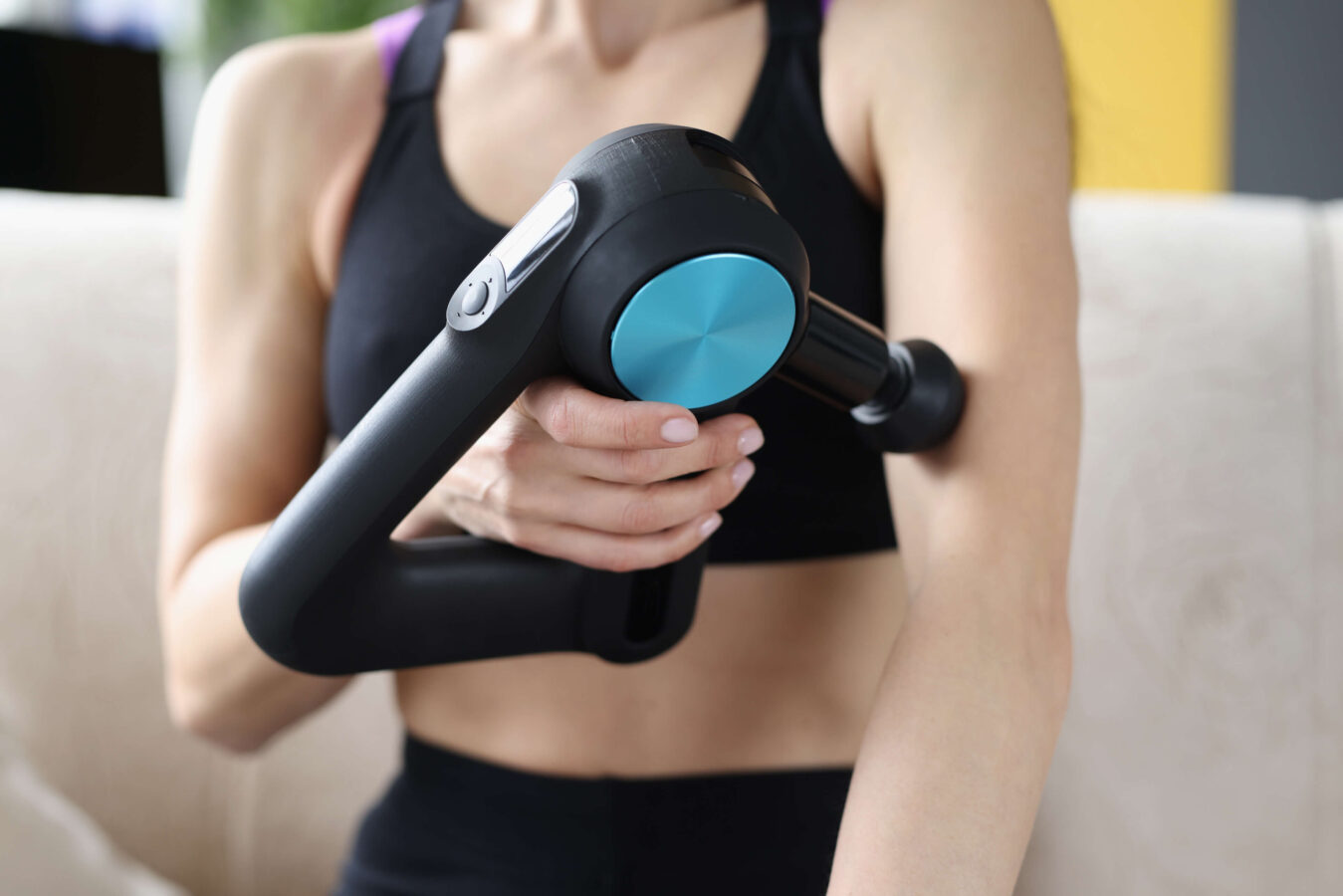
Medically reviewed by Misty Seidenburg
Massage guns have become widely popular in recent years. These do-it-yourself tools are designed to relieve muscle pain and tension. But do massage guns work? Here, we look at the pros and cons of percussive therapy to help you decide whether to invest in a portable massage device.
Massage guns are hand-held devices that deliver gentle, pulsating pressure at a high frequency. These rapid, repeated pulses are known as percussive therapy, a technique introduced in the 1950s for deep-tissue pain relief.
Today, many professional athletes, trainers, and physical therapists use and promote massage guns to improve flexibility and range of motion, reduce pain, and support recovery. Personal massage guns allow you to achieve similar results at home. Most models are rechargeable and come with various tips and or attachments to target different muscle groups throughout the body.
Now, let’s explore the benefits of massage guns and the science behind them.
One systematic review published in 2023 analyzed the results of 13 separate studies and found that “PT delivered by massage guns can help improve acute muscle strength, explosive muscle strength and flexibility, and reduce experiences of musculoskeletal pain.” Ultimately, you will decide if a massage gun is beneficial for you. If you notice a positive difference, there are no “cons’ when using them correctly for recommended conditions.
If you’re curious about percussive therapy, here are some tips to consider when using a massage gun.
To achieve relief from muscle pain and tension faster, add some light stretching before and after percussive therapy.
Massage guns are not suitable for every person and every health condition. You should not use a personal massage device on or near:
Also, percussive therapy is not recommended for individuals with high blood pressure, inflammatory disorders, and conditions that affect the blood vessels. When in doubt, check with your provider if you have questions or concerns about percussive therapy.
Massage is just one of the many hands-on therapies physical therapy offers to relax tight and tired tissues and enhance recovery. If at-home treatments aren’t cutting it, schedule a pain-relief screening with a physical therapy clinic near you.
External Sources:
